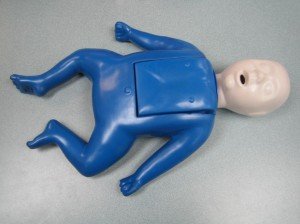Shaken baby syndrome is a type of brain injury which occurs once a baby or toddler is viciously shaken. Always bear in mind that the shaking can cause bleeding within the brain or bleeding in the retina. Additional injuries can also occur when the child is thrown down onto a surface which results to shaken impact syndrome.
Once a child is shaken, the brain is jerked from side to side against the sides of the skull. The heads of infants are quite large and heavy in proportion to the rest of their bodies. As a result, it leads to bruising, engorgement and bleeding in the brain.
What are the potential outcomes?
There are a number of consequences when an infant or toddler is shaken. In most cases, these can be considered extreme such as the following:
- Blindness
- Brain damage
- Seizures
- Hearing loss
- Learning and speech disorders including mental retardation
- Damage to the neck and spinal cord that can lead to motor dysfunction ranging in severity from clumsiness to paralysis
- Death
Symptoms of shaken baby syndrome
An infant or toddler who has been shaken and endures pressure on the brain might experience the following symptoms:
- Vomiting
- Extreme irritability
Once a child is shaken, the brain is jerked from side to side against the sides of the skull. - Breathing difficulties
- Diminished appetite or feeding issues
- Convulsions or seizures
- Lethargy
- Pale or bluish skin
- Bruising such as grab marks on the chest or arms
- Tremors
- Forehead appears bigger than usual or a soft spot that appears to bulge
- Inability to lift the head
- Could not focus or follow movement with his/her eyes
- Loss of consciousness
- Coma
Who are at risk?
Shaken baby syndrome typically occurs among infants up to those who reach a year old. Babies at 2-4 months face the highest risk. The condition does not usually occur after 2 years old but even children 5-6 years old can sustain damage in this manner if the action is quite violent.
What is reason why babies are shaken?
Parents and caregivers might believe the shaking the child will put a stop to crying. Parents and caregivers might be unable to cope with the real fact of caring for a child and take their frustration out on the child. Always bear in mind that the results of shaking can be quite devastating and something that must not be done in any way.
Based on statistics, those who were accountable for shaking babies are male. While the age range is great, generally men who shake infants are usually in their 20s. On the other hand, it is not only males who shake babies. Even mothers and female caregivers were also found to do the act as well. Shaken baby syndrome can occur among families of any income range, ethnicity and with the type of family composition.
Management of shaken baby syndrome
Shaken baby syndrome should be managed right away. Parents or caregivers should bring the child to the nearest emergency department and inform the doctor that the child has been shaken. Depending on the severity of the symptoms, children might require treatment such as respiratory support or surgery in order to control the bleeding.
Some of the symptoms manifest right away, but others might be delayed. In some children, they experience attention issues and behavioral problems later in life due to being shaken when they were infants.
Diagnosis
The doctor will not always get the truth whether or not shaking was done. Infants and toddlers could not inform the doctor what happened or what hurts. Most of the symptoms such as lethargy, vomiting or irritability are also common in various viral conditions.
Doctors should utilize additional tests when brain injury is suspected. An X-ray can reveal skull fractures as well as other tests such as MRI or CT scan. In some cases, special attention is required to check for retinal bleeding.

